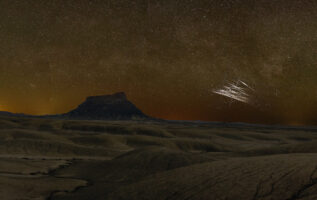This second day I decided to move from Hurrah Pass toward Hanksville to try and get a different foreground/perspective on both the comet and the flare zone. The Hanksville area provides myriad opportunities to capture the night sky nearly down to the horizon in nearly any direction you look, depending on your location. Factory Butte is one of the primary topographic features of the area, and has been a favorite shooting destination of mine for years, as the bentonite shales provide an other-worldly landscape akin to something on another planet (the Mars Desert Research Station is located quite near here).
The weather again proved optimal for night captures, and after deciding I’d initially picked a location a bit too far south, I hastily re-located to a new campsite just on the north edge of an outcrop that stands above the bentonite shale plain, then scrambled to get cameras set up before true night set in. The 70° day temperature slowly dropped to a comfortable and windless 50° for the next several hours, which is quite a treat for hanging out in the desert at night during late October! As dusk fell a broad green band of color became visible just north of where the sun had set, low over the horizon. Seeing this green color at late sunset is generally an indication that the air is very transparent and still, optimal for night imaging:
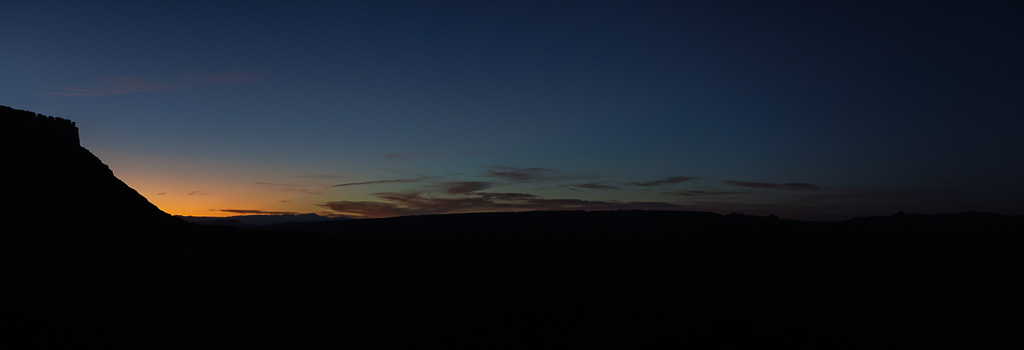
While watching the flaring through binoculars, I was often able to see 4 satellites within the field of view moving in slightly different directions, with the brightest flares exceeding -3 magnitude, brighter than Jupiter on this night. As previously-stated, I never really know what the ‘mesh’ of flare trails will look like once composited, but tonight’s image would prove to be a one-of-a-kind capture that I may never be able to repeat (but will likely try next year when the sun’s alignment will allow it… weather permitting). As the previous night’s flare geometry would suggest, the sun happened to be near the perfect declination and azimuth in order to highlight the northerly edge of the 43° inclination shell.
This particular location on this specific date was precisely optimal to be able to see the ‘wall’ of 43° inclination satellites as they transited the most-northerly track of their orbits, illuminated by the sun directly below. Looking into this narrow zone allows simultaneous capture of the point where multiple planes of satellites converge at the same visual point in the sky, and when composited allows visualization of the point beyond (north of) which 43° satellites do not transit: a virtual ‘wall’ of satellites:
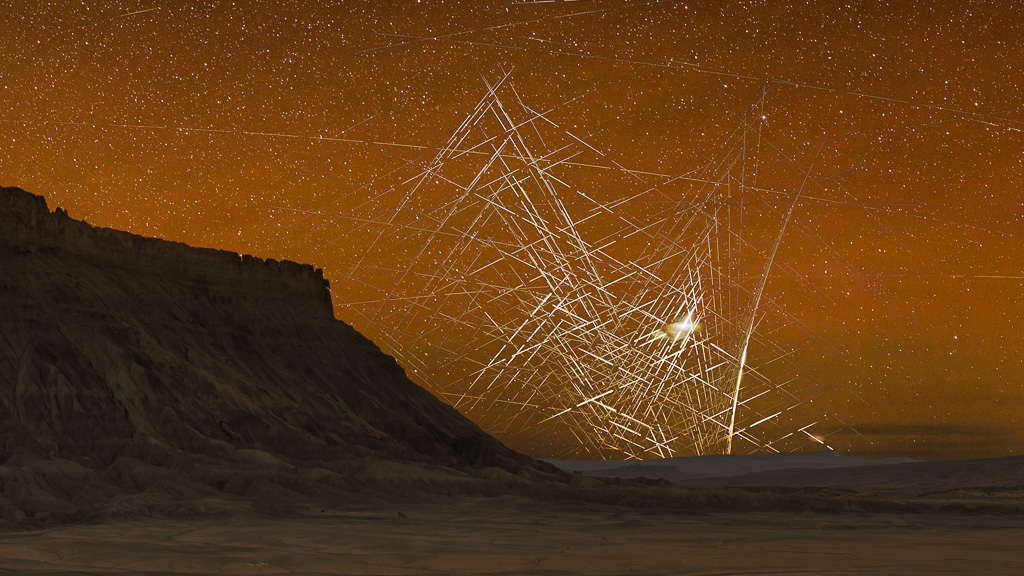
Again note in the crop below the details of the ‘wall-like’ geometric edge of the 43° shell satellites; there is a hard limit beyond which these satellites do not transit as everything to the right is higher (i.e. further north) than 43° North latitude, and thus all flare trails of the 43° shell lie to the south (left) of this boundary. Also note that three flares illuminated two very small clouds that briefly developed (one in the flare zone, one just above the horizon, right before the flaring stopped):
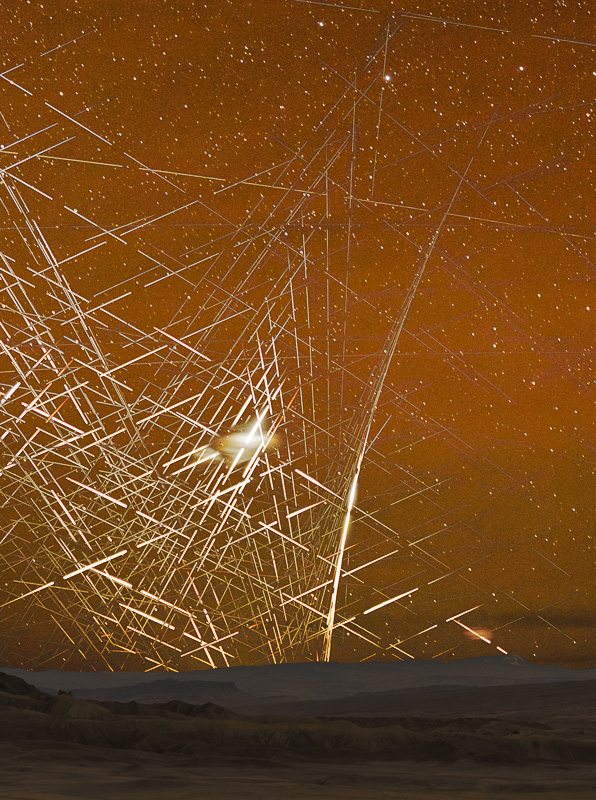
Capturing the data to create these high-resolution panoramas along with Starlink flares accurately composited into a final image is laborious, both during planning/capture and probably moreso during post-processing. In the following (source) panorama image, Factory Butte lies beneath the comet, with Caineville Mesa on the horizon to the left (the outcrop upon which I was camped at far left). The light dome at the right of the image is from Green River, UT, some 60+ miles to the north, while a pair of NOSS spy satellites transit overhead from north to south. The handful of ‘errant’ satellite trails are not Starlink, and thus do not generally ‘fit’ the geometry of the Starlink flares that comprise >95% of the trails in the image.
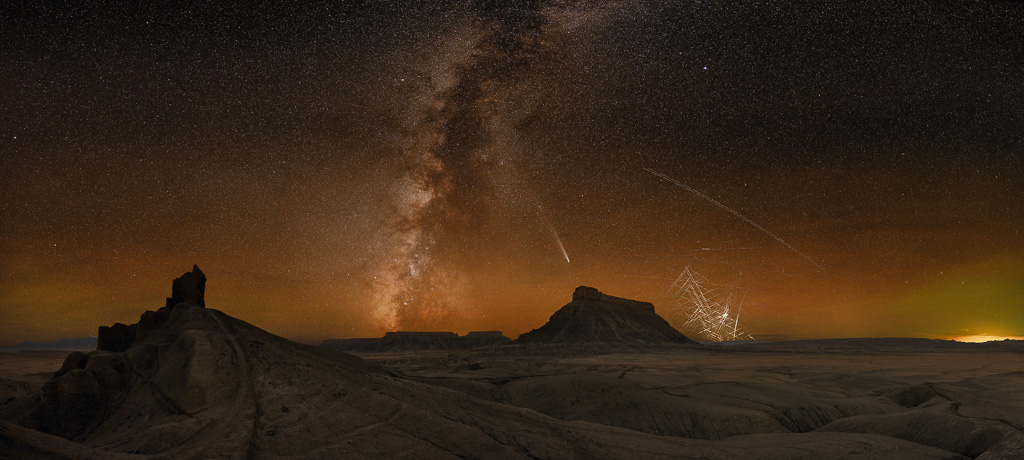

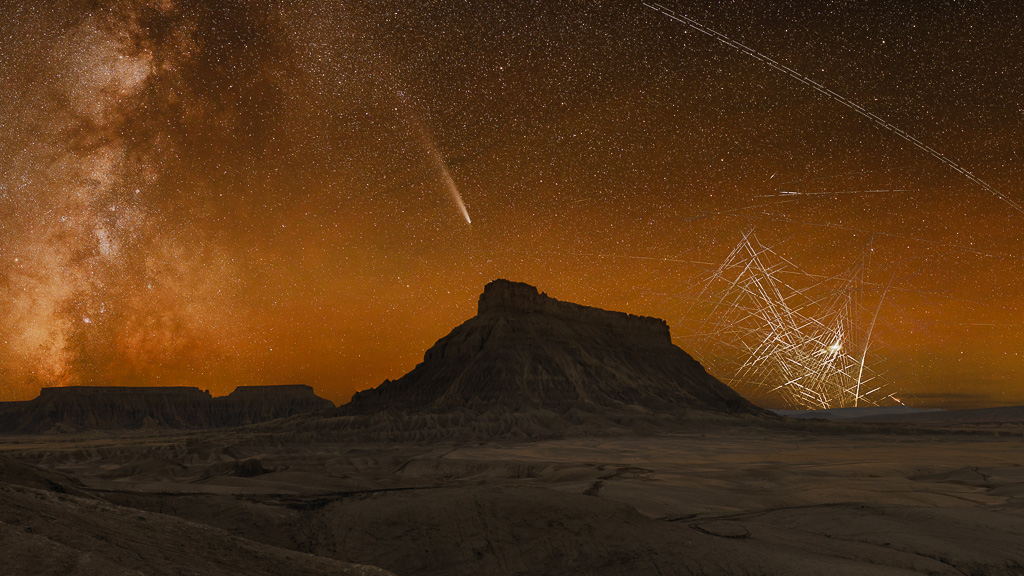
![8/19/23: What are those flashing lights in the sky? [v.1]](https://catchingtime.com/wp-content/uploads/2023/08/3_StarsALIGNED-full_1024x-381x200.jpg)
